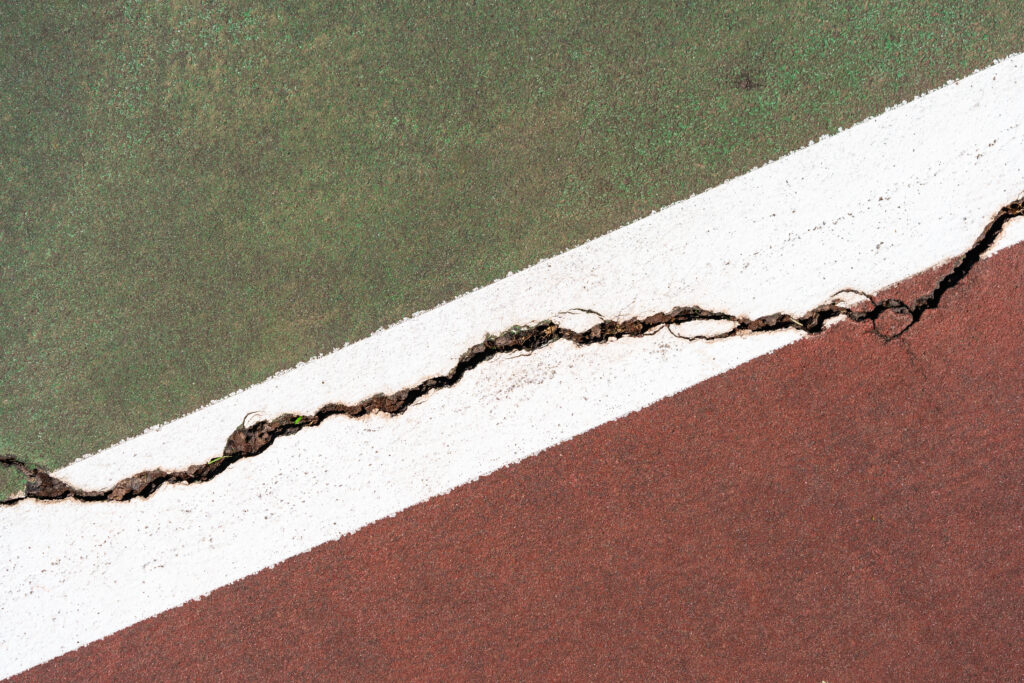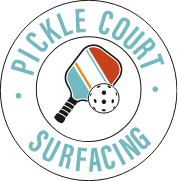
September may seem early to start thinking about whether you can use your backyard sports court during the fall and winter, but since many court surfacing companies close for the season starting in October, it’s good to know whether or not you can use your backyard court during this time of year.
Here is what you need to know about if you can play on your court during the winter months, if you should turn your court into an ice rink, and more. Let’s get into it.
Should You Play On Your Outdoor Court During The Winter?
Technically, yes, you can. However, playing on your outdoor court during the winter can be dangerous. Ice can form, snow can pile up on the court, melted snow or rain can create puddles that make it easier to lose your footing, and more. Winter weather can damage your court and its accessories, like the nets.
This is why most people put their court accessories away during the winter months and use things like court covers in order to keep their courts protected.
Should You Turn Your Backyard Court Into An Ice Rink?

Look up whether you can use your backyard court during the winter months, and you’ll come across two types of articles: how you can winterize your court and how to turn your backyard court into an ice rink. Turning your court into an ice rink certainly sounds fun — but should you do it?
In short, no, absolutely not. Trying to turn your backyard court into an ice rink can damage the court. It can also be dangerous to you and anyone else who tries to ice skate on your makeshift rink. Ice rinks are very carefully maintained and have nice, thick ice so that you can safely skate on them. Makeshift ice rinks are neither of these things.
In order to preserve your court and your health and safety, keep the ice skating to the real ice rinks. While it may not be as convenient as being able to ice skate in your backyard, it’s better for you and your court.
What To Do If You Want To Play Sports In The Winter
If you want to maintain your pickleball, tennis, or basketball skills during the winter months, head on over to an indoor court! As previously mentioned, it can be dangerous to play these sports on your outdoor court during the winter. However, indoor courts are shielded from seasonal dangers like ice, making them the perfect place to maintain your skills when it’s freezing out.
How Can You Prepare Your Outdoor Sports Court For The Winter?

To prevent cold temperatures, snow, and ice from damaging your outdoor court, there are a few essential steps you must take.
First, you’ll want to clear away any debris that has accumulated on its surface, especially fallen leaves. If you let leaves, branches, and dirt remain on your outdoor court through the winter, they can cause mold and mildew growth, causing damage. You’ll also want to remove any equipment like nets and windscreens and store them somewhere safe until the weather warms up.
You should also take care of any needed repairs or resurfacing before winter hits. Because water expands when it freezes, the season’s freezing and thawing cycles can cause cracks and birdbaths to worsen.
Finally, you may want to consider getting a court cover to protect your court from the elements, especially if you get a lot of snow and ice where you live.
Resurface Your Sports Court Before Temperatures Drop Too Low
If your court needs resurfacing, it’s best to have this done before the temperatures start dropping. Any damage will only worsen over the winter months. Many sports court surfacing companies shut down during the winter months due to the fact that the cold weather impacts the surfacing process. When it gets too cold, the surfaces don’t dry properly, which leads to all sorts of damage down the line.
Weather matters, too. In the fall and winter, it tends to be overcast, rainy, or snowing. In order for your court surface to be properly resurfaced or installed, it both needs to be warm enough and it needs to be sunny out. Pickle Court Surfacing is here to help you keep your backyard court in good condition for as long as possible. For best results, you’ll want to have repairs done before temperatures start to dip, so if you need court repair or resurfacing, contact us while it’s still warm out. With a little extra care, your court can survive the winter without any further damage.
